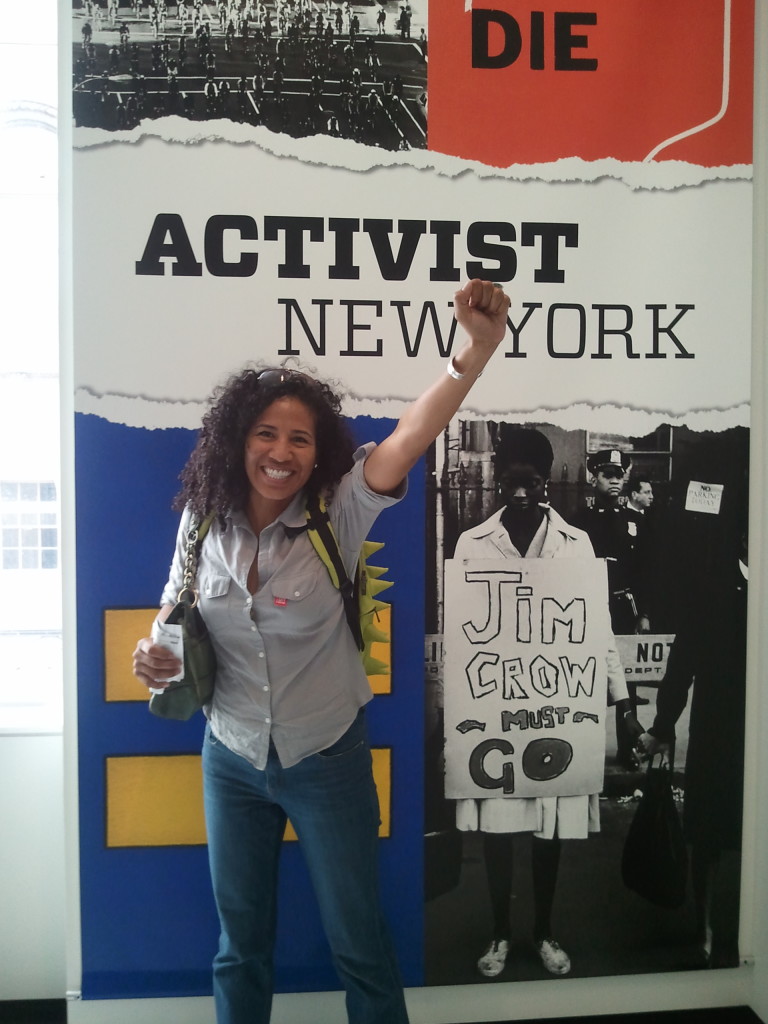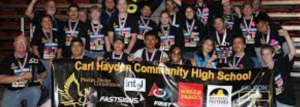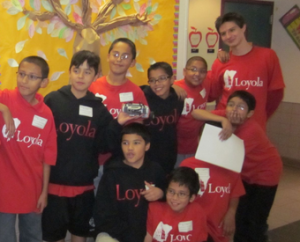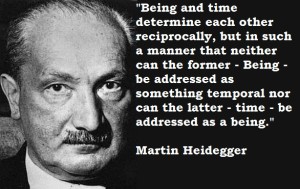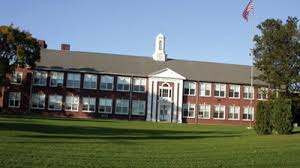This week, I did some more reading about an idea that has my full attention: community cultural wealth, or “the array of cultural knowledge, skills, abilities, and contacts possessed by socially marginalized groups that often go unrecognized and unacknowledged” (Yosso, 2005, p. 69). (This is the same set of assets I discussed in an earlier post, “Motivational Marginalization: Diversity in Private Schools.”) I spent some more time considering the six types of cultural capital proposed by Tara Yosso “that are historically undervalued and unacknowledged in White, middle-class institutions like schools” (Liou, Antrop-Gonzalez, & Cooper, 2009, p. 538). Here are Yosso’s categories, with her brief explanations of each:
- aspirational capital: “the ability to maintain hopes and dreams for the future, even in the face of real and perceived barriers” (2005, p. 77);
- navigational capital: “skills of maneuvering through social institutions” (2005, p. 80);
- social capital: “networks of people and community resources” (2005, p.79);
- familial capital: “cultural knowledges nurtured among familia that carry a sense of community history, memory, and cultural intuition” (2005, p. 79);
- resistant capital: “knowledges and skills fostered through oppositional behavior that challenges inequality” (2005, p. 80); and
- linguistic capital: “the intellectual and social skills attained through communication experiences in more than one language and/or style” (2005, p.78).
It’s the last of these, linguistic capital, that I’d really like to focus on today, for a couple of reasons: First of all, I think it would be beneficial to my own practice as a teacher to take some real, dedicated time to consider the ways in which I am–and, more importantly, perhaps, the ways I’m not–valuing and fostering each of these kinds of capital in my students of color. Secondly, I’m an English teacher, a writer, and a lover of language. I already believe, deeply, that the best vocabulary is one rich in the inflections, hues, loanwords, code-switching, hybrids, and mash-ups pulled from all of one’s languages and experiences.
One of the reasons I love teaching 10th-graders is that, on the whole, I think they strike an ideal balance between a child’s wonder and a young adult’s eagerness to engage in complex, intellectually sophisticated ideas. Because of that, I’m able to throw things at them that I didn’t really encounter until college: the idea of cultural marginalization, the literary and social concept of the Other, and the theory of multiple intelligences are all thematic touchstones to which we return, over and over, throughout the year as we study literature. Early on in the year, I try to establish that intelligence is not synonymous with years of formal education, and that education is not synonymous with schooling (this will serve us well when we get to our discussion of Colonialism with Things Fall Apart and I ask them if, for example, the people of Umuofia are “educated” before the white missionaries show up).
My students are already discovering and critiquing the ways in which language is all bound up in power. For example, all year long we talk about what makes something a “real word” (and I struggle to disabuse them of that question, encouraging them instead to ask if a word is “standard usage”–which allows us to parse whose standard is the standard and whether it will, or should, remain the standard). In tandem with the Richard Rodriguez essay “Aria,” which I discussed in that earlier post, we also read a first-person essay titled “Blue Collar Brilliance,” in which Mike Rose’s reflections on his mother’s experience as a waitress serve as a jumping-off point for him to consider and discuss “how much [blue-collar, service-industry, low-wage occupations] demand of both body and brain” (Rose, 2009).
As I’ve mentioned before, most of my students come from pretty financially comfortable homes. Several, however, do not. And so I offer this article to the class with the hope that it will, for the kids from wealthy homes, broaden their definition of what it means to be competent, skilled, and valuable as a worker and therefore broaden their respect for the people who perform these jobs. For the students who come from homes where their parents hold jobs like the ones Rose describes, or for students who themselves have experience working as waitstaff, house cleaners, landscapers or other jobs that their wealthy peers benefit from but sometimes fail to even see, I hope that this essay–and our careful, respectful consideration of it–communicates to them that I respect that work and that I want to create a space in my classroom where that work is valued, honored, respected, seen. I talk about this article in terms of multiple intelligences, but I realize now that I’m really talking about different kinds of cultural capital.
In fact, now that I reread Rose’s essay through the lens of cultural wealth, I realize that he’s celebrating the kinds of capital in which his mother and other blue-collar workers are wealthy–among them linguistic capital (“Lingo conferred authority and signaled know-how”) (Rose, 2009), navigational capital (“Joe learned more and more about the auto industry, the technological and social dynamics of the shop floor [and] the machinery and production processes”) (Rose, 2009), social capital (“She became adept at reading social cues and managing feelings, both the customers’ and her own … The restaurant became the place where she studied human behavior, puzzling over the problems of her regular customers and refining her ability to deal with people in a difficult world”) (Rose, 2009). If I were in a position to nominate another kind of capital to add to Yosso’s six, I might add something like sequencing or task flow capital: Certainly there’s a particular valuable knowledge and skill at work when a one does what Rose’s mother did when “she’d sequence and group tasks: What could she do first, then second, then third as she circled through her station? What tasks could be clustered?” (Rose, 2009).
Yosso asks: “Are there forms of cultural capital that marginalized groups bring to the tale that traditional cultural capital theory does not recognize or value?” (2009, p. 77). Her answer is an unequivocal “yes.” To try to address that systematic undervaluing, she works from a framework of Critical Race Theory (CRT) , which “shifts the center of focus from notions of White, middle class culture to the cultures of Communities of Color” (Yosso, 2009, p. 77). According to Yosso, “community cultural wealth is an array of knowledge, skills, abilities, and contacts possessed and utilized by Communities of Color to survive and resist macro and micro-forms of oppression” (2009, p. 77).
For that reason, I think it’s risky–if not downright inappropriate–to simply borrow the idea of cultural wealth from its home within CRT and simply apply it to poor or working-class people of all colors. (Although I know this is not a universally accepted opinion, I believe that a poor or working class white person retains white privilege. I’m not saying a poor white person has an easy life, only that his or her road is smoothed in ways that a similarly impoverished non-white person’s is not. Let’s park that idea to the side for the time being!) I want to be explicit in saying that I don’t think I can appropriate the concept of community cultural wealth and divorce it from its roots in CRT without doing so carefully and with limitation.
That said, poor and working-class people, like people of color, suffer a reductive and dismissive fate in the hands of our popular culture and our educational institutions. As Rose (2009) says, “Although writers and scholars have often looked at the working class, they have generally focused on the values such workers exhibit rather than on the thought their work requires — a subtle but pervasive omission. Our cultural iconography promotes the muscled arm, sleeve rolled tight against biceps, but no brightness behind the eye, no image that links hand and brain.” Students who come from poor or working-class families, I would argue, might also be victims of deficit thinking, which “takes the position that minority students and families are at fault for poor academic performance because: (a) students enter school without the normative cultural knowledge and skills; and (b) parents neither value nor support their child’s education” (Yosso, 2009, p. 75). The suspected deficits are all the more magnified if a student is a poor or working class student of color.
Just as the educational system fails to value the forms of cultural capital that students of color bring, the educational system largely “defin[es] intelligence solely on grades in school and numbers on IQ tests. And we employ social biases pertaining to a person’s place on the occupational ladder. The distinctions among blue, pink, and white collars carry with them attributions of character, motivation, and intelligence. Although we rightly acknowledge and amply compensate the play of mind in white-collar and professional work, we diminish or erase it in considerations about other endeavors — physical and service work particularly” (Rose, 2009).
All of this is to say that in analyzing these two essays–“Aria” and “Blue-Collar Brilliance”–with my sophomores, we are already in a space where we are discussing cultural capital, though we have never used that term before. When I head back to school in August, I will bring this term, and this concept, to my students as a framework for discussing these two articles. So that answers how I can talk about cultural capital with my students, but it doesn’t really resolve how I can better value and honor the cultural capital–and today I’m focusing on linguistic capital–that they bring with them to school.
I want my classroom to be a place where these students get practice as both analyzers of literature and creators of literature. This dual goal was really crystallized for me when a friend, a middle-school teacher at an independent school, commented that “[He and his middle school co-faculty] had taken for granted that students should study literature in order to write about it. Yet [his elementary level faculty counterparts] emphasized that their students study literature in order to actually write it” (M. Fishback, personal communication, April 9, 2014). Similarly, I don’t want to just talk about educational equity with my students, I want to work toward educational equity with them. I don’t want to pay lip service to linguistic capital, I want to create a space where they can cash in on their linguistic capital.
One activity that I created last semester comes to mind as an example of a way that I could do just that. Although I conceived of this activity and implemented it before I’d learned about cultural capital, I’ll share it here as an activity that operates on the premise of valuing the language my students come to me knowing, as opposed to the language I teach them.
Last spring, we were reading Things Fall Apart, a novel by the great Nigerian author Chinua Achebe. Our discussions tended to revolve around plot (what happened?), reader response (how do I feel about what happened?), and historical context (Colonization and the importance of the book as a reclamation of a narrative of Africa). What was lacking–perhaps because the language in the book is deceptively simple–was discussion of the book qua book and what my students as budding writers could learn from it.
I selected a passage from the novel that had a lot of italicized Ibo words and ask my students to walk me through Achebe’s way of using the word to cumulatively depict its meaning as opposed to defining it with an appositive. Sentence by sentence, we read the clues provided by the text: Ah, yes, the egwugwu are feared; we can tell because the women of the village run from them when they emerge. Oh, but the egwugwu are also objects of fascination and admiration; we can tell because the women run only far enough away to remain safe but near enough that they can still see. Oh, look, here we see there are nine egwugwu. In this manner, we packed on understanding of the term that the author did not ever explicitly define for us, and we came to a full understanding of the function, appearance, and reception of these nine awe-inspiring ancestral spirits depicted by male village elders in costume at important community gatherings. We also realized that as readers we were quite tolerant and patient about having an unknown term take shape for us. In fact, we found it rewarding as readers not to be simply told what the word meant. So if we were patient as readers, we could probably, as writers, count on that patience from our readers.
Next, I asked students to choose a word they knew but that they guessed their peers would not know. It could be a word from a non-English language they knew, a technical term or piece of jargon from an activity or industry they knew well, or a nonsense word. I gave them 20 minutes to write a passage in which the word gets used at least five times but was never explicitly defined. Just like Achebe did, I wanted them to depict meaning as opposed to dictating meaning. I framed it like a challenge to them: By the end we should know what the word means and as much as possible about it.
Most students did not choose nonsense words. Students chose words from Mexican slang, Hindi words, and family inside-joke words. As it turned out, my students knew all kinds of words their peers didn’t know, and they were eager to share their writing (more eager than usual, I’d say). In terms of the writing itself, the results were clever, imagery-rich, and syntactically freewheeling and unbounded. After sharing, we talked about how else a writer could use this technique–with technical language, fantasy writing, or in boundary-blurring fiction and nonfiction like Amy Tan’s, where she tries to capture the experience of being the American daughter of a Chinese mother. They also independently connected the technique to what they saw in Jhumpa Lahiri’s The Namesake.
Furthermore, and importantly, the exercise served to heighten the attention they paid to the literary elements of Achebe’s book, which I think is crucial given the fact that “some works are called literature whereas other works are termed folklore. … the literature of people of color is more likely to fall into the folklore category” (Dunbar, 2008, p.85). Keith Booker argues that “anthropological readings … have sometimes prevented African novels from receiving serious critical attention as literature rather than simply as documentation of cultural practices” (as cited in Snyder, 2008, p. 156). Snyder (2008) adds that “the naive ethnographic or anthropological reading treats a novel like [Things Fall Apart] as though it transparently represents the world of another culture, ignoring the aesthetic dimensions of the representation” (p. 156). Although I do think the book opens students’ eyes to practices, rites, and traditions of a culture most of them know nothing about, I do not want to contribute to that very Eurocentric and Colonialist approach to studying Achebe’s work as a cute little artifact as opposed to a powerfully important anti-Colonial event and an aesthetically and structurally intricate piece of literature.
In addition to those benefits, I see now, this activity also invited students to leverage their linguistic capital. In this activity, bilingual students had the edge. By asking them to choose a word they knew that their peers did not, I communicated to them that I was explicitly looking for words outside of our shared classroom experience. Furthermore, in the sharing portion of the activity, students asked one another about the words they’d share–what did it mean, exactly, how was it used, what were the shades of connotation, was it “standard usage” or slang? To stand in front of the room and be the teacher, even for a few minutes, transferred the power to these students and their outside-of-school language. (Notably, the students who used a family-created “inside joke” word were also leveraging their familial capital to fulfill their teacher’s expectations of a piece of school writing.)
This is only one small opportunity that I have found in my current pedagogical practice and curriculum to increasingly emphasize, foster, and value linguistic capital. As I mentioned at the beginning of this post, I believe that each facet of Yosso’s discussion of cultural wealth is worthy of reflection and examination in terms of my classroom. How am I welcoming, rewarding, and fostering the development of navigational capital? Resistance capital? There’s lots to think about here.
Finally, to talk about these “knowledge, skills, abilities, and contacts” (Yosso, 2005, p. 69) in terms of capital or wealth invites me to consider how that metaphor can be extended: can a person become bankrupt of cultural capital? I doubt it. Can a person invest her cultural capital and enjoy compounding interest? Probably. Does a person pay any kind of cultural tax when he acquires cultural wealth? Perhaps. Can cultural wealth can be shared, spread around, redistributed? Yes. All of my students left linguistically richer after that activity, as did I.
References:
Dunbar, C. (2008). Critical race theory and indigenous methodologies. In Denzin, N., Lincoln, Y., & Smith, L.T. (Eds.) Handbook of critical and indigenous methodologies. 85-99.
Liou, D., Antrop-Gonzalez, R., & Cooper, R. (2009). Unveiling the promise of community cultural wealth to sustaining latino/a students’ college-going information networks. Educational Studies, 45, 534-555
Rose, M. (2009). Blue collar brilliance. The American Scholar. Retrieved from http://theamericanscholar.org/blue-collar-brilliance/#.U5YvU3BgNbU
Snyder, C. (2008). The possibilities and pitfalls of ethnographic readings: Narrative complexity in Things Fall Apart. College Literature, 35(2),154-174
Yosso, T. (2005). Whose culture has capital?: A critical race theory discussion of community cultural wealth. Race, Ethnicity and Education, (8)1, 69-91.
